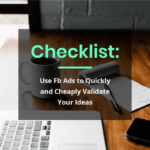There are two types of businesses:
Those that profit with email marketing (ROI for email marketing is estimated at 47:1)
Those that don’t
If you seek to be a member of group #1, the first hurdle you face is figuring out how to write emails that people will open and pay attention to.
It’s well worth the effort, because email marketing is one of the most influential tools for nurturing leads, engaging customers, building relationships, and selling products or services.
How can you make yourself standout when everyone’s in-boxes are filled with e mails sent from companies just like yours?
Before you can start a successful campaign, you need to come up with a strategy. Without a solid game plan your e-mails will go unread.
Step 1 – Understand Your Audience
The first step you need to take is to understand who your target customer is what their needs are. Do your research and create customer profiles. Figure out exactly why they need the product you are offering them and how to continuously engage them throughout the process.
Step 2 – Use Copywriting Best Practices
The second step is to understand copywriting best practices. You will need to start with a compelling subject line that draws your customer in. Personalizing the subject line is an effective way to do this. If your subject line is not captivating your email will probably go unread.
Feel free to get creative with your headlines, but make sure they are true to the content of your email. No bait-and-switch tactics!
Here are some of my favorite subject lines, some of which include a “merge tag” that automatically inserts each recipient’s first name:
Hey {First Name}
Thanks {First Name}
The time I (did/experienced something surprising that leads into a discussion relevant to the customer)
Case Study: (Result Obtained That Your Prospect Wants For Themselves)
Once your subject line is sorted out, you’ll want to pay attention to formatting.
Email marketing platforms typically come loaded with colorful email templates for you to use. Those may be appropriate for your business, or they may not be. When writing emails for B2B services I tend to stick with very simple formats.
Plain email formatting can make your emails look less commercial. Using a personal, informal writing voice does the same. One colleague of mine purposefully makes typos in his marketing emails so that people will feel they are more natural. Most businesses won’t want to go so far as to purposefully include typo’s, but are still well-advised to consider using a friendly, casual tone.
Of course, tone and design aren’t enough to generate sales. Every email should have one primary purpose. That may be to build relationship, drive traffic to something on your website, generate a lead, or make a sale.
Whatever that goal is, align everything in your email towards that goal and, where appropriate, make a clear call to action.
Be sure to test any links or buttons you include in your email to make sure they work, before sending your email.
Step 3 –Segment Your Lists
The third step is to segment your emails. Your audience has different needs from each other and some things that apply to certain clients may not apply to others. Additionally, customers may be in different stages of your sales cycle.
For example, if I were writing emails for a company that sells instructional courses for golfers, I would segment my list into different categories:
Beginner
Intermediate
Expert
I would segment further by each person’s place in the sales cycle:
Recent subscriber
Viewed offer
Spent more than [x] minutes on website
Contacted sales
Customer
Tailor your emails to different segments of your list and watch as your open rates, click-through rates, and revenue increase.
Step 4 – Check For Mobile Optimization
The fourth step is optimizing your emails for mobile devices. In 2018, 52.2% of all global website traffic was viewed on mobile devices, and according to Hubspot 48% of emails were opened on mobile devices.
If your emails do not look right on mobile devices, chances are they will not be read. The best way to ensure your emails are optimized is by : keeping the subject line short and concise, make sure the font is big and clear, break up large blocks of words in the body of the email with visuals, and place calls to action and buttons in the middle of the page.
Step 5 – Use Marketing Automation
Marketing automation makes it possible to program actions to occur in response to specific:
Actions subscribers take on your website
Interactions of subscribers with your emails
Time conditions
Lead scores
And more
Well-designed automation sequences can get complicated. The Reputation Elevation Marketing Automation platform makes it easy to visualize everything:








